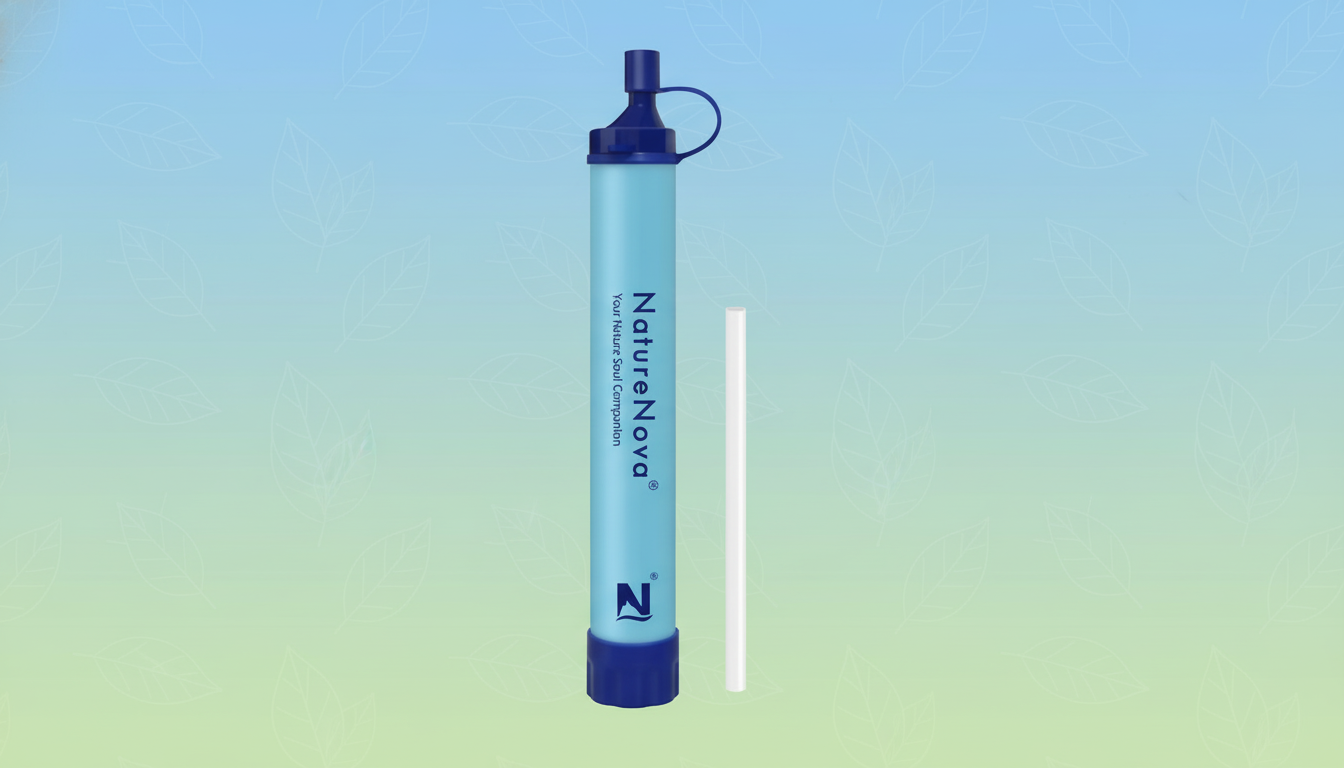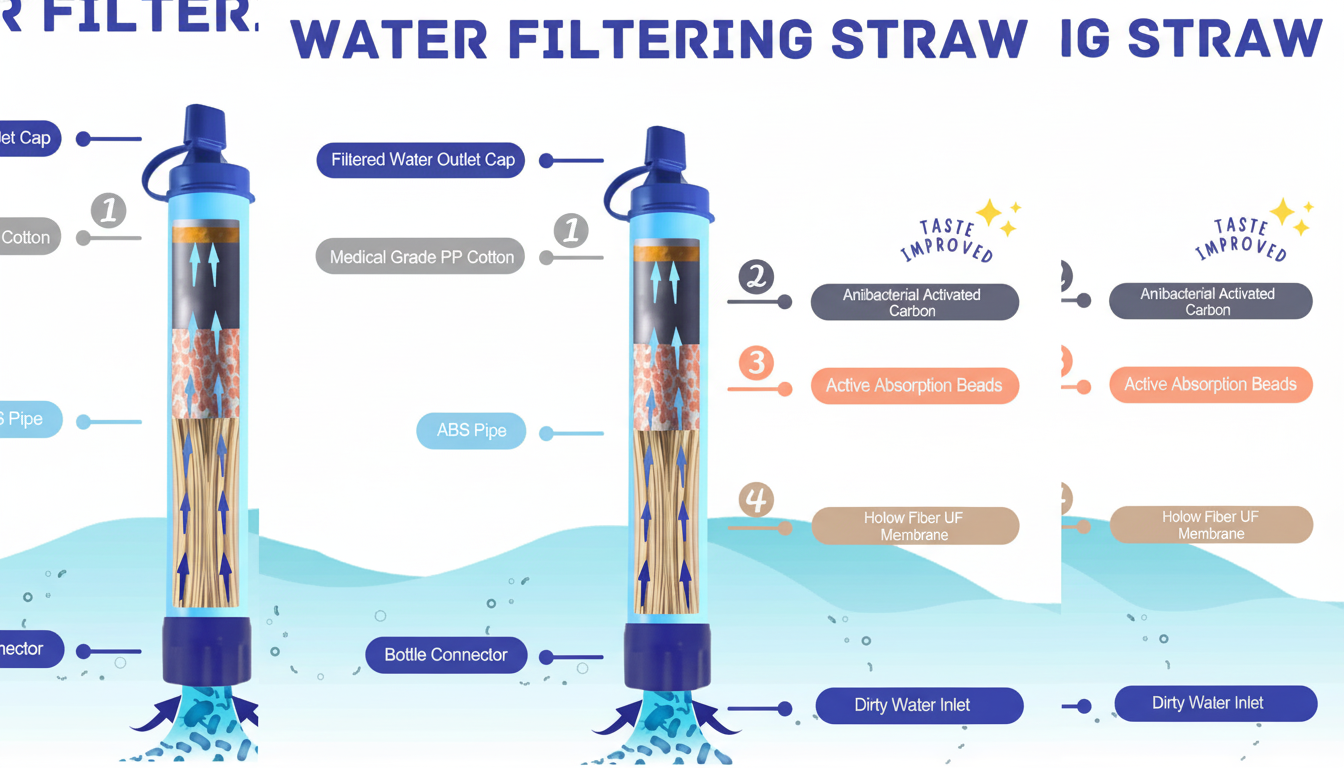The NatureNova Personal Water Filter Straw can be yours for $10.38, which is a significant 20% discount from the original price of $12.99 — not to mention $2.61 saved on a portable, four-stage water purification system ideal for hikers, travel and emergency kits alike.
At this price, it’s undercutting a lot of big-name competition while coming bundled with useful accessories and enduring the distance.

Why This Deal Is Great for Budget-Minded Shoppers
Value counts in the ultralight water-filtration category, and this deal offers it. Rated to hold up to 1,500 liters (around 396 gallons), the cost per liter is nearly 0.7 cents, making it an affordable method of adding redundancy to a go-bag or car kit. The package comes with an extension tube and a backwash syringe — extras that don’t always accompany cheaper straws — along with the ability to fit standard-thread water bottles for sip-or-squeeze flexibility.
How the Four-Stage Filtration System Actually Works
NatureNova’s 4-stage solution incorporates a prefilter (PP cotton) to filter particulates, activated carbon for the minimisation of taste and odour whilst also reducing some chemical compounds, and a hollow fiber membrane used for microbial reduction. The brand says 0.01-micron filtration and that tiny contaminants are removed 99.999999%. For context, hollow fiber membranes are a tried-and-true technology that has been used extensively in the outdoor industry.
Size of the pathogen matters: many protozoan cysts, like Giardia and Cryptosporidium, are on a scale of micrometers and get captured very effectively with microfiltration, whereas bacteria are smaller but are commonly blocked. The smallest virus size may be even less than 0.1 microns, so experts typically suggest combining disinfection when there is a risk of any form of virus. The C.D.C. says that using filtration along with chemical treatment or UV is the best strategy for handling viruses if required.
What This Straw Does and Doesn’t Filter Effectively
Straws like this one outperform bacteria and protozoa from many backcountry sources, according to manufacturer claims, and the activated carbon can help lower some volatile organic compounds and improve taste. But dissolved toxic metals, commercial poisons and a few chemicals are beyond what the average personal straw can do in an emergency. However, the Environmental Protection Agency and C.D.C. also explain that no one approach is effective against all contaminants, and users must match treatment to local water quality and a home’s risk profile.

Look for independent verification. These are supplementary to products that are either certified under NSF/ANSI P231 (for microbial reduction) or that have been tested against standards of interest. In the absence of certification or third-party testing mentioned on packaging or manufacturer materials, treat these performance numbers as claims and maintain conservative practices — like prefiltering clean-looking water and adding back disinfection where viruses might be present.
Real-World Use, Care, and Maintenance Tips
At less than 3.5 ounces, the straw fits handily in your hip belt pouch or glove box. It also includes practical field details: an extension tube means you won’t have to hunch near enough to the waterline (just thread it on your preferred type of wide-mouth bottle), and a converting syringe makes backflushing simple, something that can restore flow and extend the life of a membrane. And, like all hollow fiber filters, don’t freeze if wet after use (and backflush after silty use to avoid clogs).
Some usage tips: skim off the surface from clearer sources whenever you can, allow sediment to settle before filtering, and always carry a small chemical purifier as a backup. FEMA suggests having multiple methods for purifying water — this straw can be a layer in a multi-system approach that might include stored water, a secondary purification system, etc.
How It Compares To Other Well-Known Brands
This is a category dominated by LifeStraw, which tends to have higher listed capacities and stronger testing credentials available depending on the model, usually at a more expensive price. Most high-end filters have published testing to NSF/ANSI protocols, are compatible with squeeze bags and gravity systems, and established field service records. The knock for the NatureNova straw? Value pitch: It comes at a low entry price, uses technology most people are familiar with, and has practical add-ons. For recreational hikers, glove-box preparedness, and group-lending, it makes for a compelling equation.
Bottom Line: A Low-Cost Filter With Clear Limits
Coming in at $10.38, the NatureNova Personal Water Filter Straw is a budget-friendly pickup and covers your backcountry water source and disaster prep basics. It’s a handy complement to a kit, though be aware it has its limits in microfiltration and is best supplemented appropriately. As with any deal, the pricing and availability are subject to change, but at this level it’s an easy win for anyone building a reliable, multi-layer water plan.

